OXACILLIN - INJECTION
PHONETIC PRONUNCIATION: (OX-a-SIL-in)
GENERIC NAME(S): oxacillin sodium
Uses
USES: Oxacillin is used to treat a wide variety of bacterial infections. It is a penicillin antibiotic. It works by stopping the growth of bacteria.
How to use OXACILLIN - INJECTION
HOW TO USE: This medication is given by injection into a vein or into a muscle as directed by your doctor, usually every 4 to 6 hours. The dosage is based on your medical condition and response to treatment. For children, the dosage is also based on weight. If you are using this medication at home, learn all preparation and usage instructions from your health care professional. Before using, check this product visually for particles or discoloration. If either is present, do not use the liquid. Learn how to store and discard medical supplies safely. If you are using the frozen pre-mixed solution, thaw the container at room temperature or in the refrigerator. If the bag is thawed in the refrigerator, let it sit at room temperature for at least 1 hour before using. Do not thaw by putting in warm/hot water or microwaving. After thawing, shake well and squeeze the container to check for leaks. Discard if the container leaks. Do not re-freeze the solution after thawing. For the best effect, use this antibiotic at evenly spaced times. To help you remember, use this medication at the same time(s) every day. Continue to use this medication for the full time prescribed, even if symptoms disappear after a few days. Stopping the medication too early may result in a return of the infection. Tell your doctor if your condition lasts or gets worse.
Side Effects
Precautions
Interactions
Overdose
Images
Reviews
Faq for OXACILLIN - INJECTION
Oxacillin is an antibiotic medication used to treat various bacterial infections caused by susceptible strains of organisms.
Oxacillin works by inhibiting the growth and replication of bacteria by interfering with the synthesis of their cell wall.
Oxacillin is commonly used to treat skin and soft tissue infections, respiratory tract infections, bone and joint infections, endocarditis, and other serious bacterial infections.
Oxacillin is typically administered through intravenous (IV) injection. It can also be given as an intramuscular (IM) injection in certain cases.
Common side effects of Oxacillin may include nausea, vomiting, diarrhea, rash, itching, hives, or allergic reactions. It is important to consult a healthcare professional if any adverse effects are experienced.
Oxacillin is generally considered safe to use during pregnancy and breastfeeding. However, it is important to consult a healthcare professional for personalized advice and to assess the risks versus benefits.
Oxacillin may interact with certain medications like warfarin (blood thinner), oral contraceptives, and some other antibiotics. It is crucial to inform your doctor about all medications, supplements, or herbal products you are taking to avoid any potential interactions.
The duration of treatment with Oxacillin varies depending on the severity and type of infection being treated. It is essential to complete the full course of treatment as prescribed by the healthcare professional, even if symptoms subside earlier.
It is generally advised to avoid consuming alcohol while on Oxacillin or any antibiotics, as alcohol can interact with the medication and potentially increase the risk of side effects.
Oxacillin is used to treat various bacterial infections, including skin infections, pneumonia, and infections caused by certain strains of bacteria that are resistant to other antibiotics.
Oxacillin belongs to a class of antibiotics called penicillins. It works by inhibiting the growth of bacteria and killing them, helping to eliminate the infection.
Common side effects of oxacillin include nausea, vomiting, diarrhea, rash, fever, and pain or swelling at the injection site. It is important to inform your healthcare provider if you experience any severe or persistent side effects.
Oxacillin is typically administered intravenously (through a vein) by a healthcare professional. The dosage and duration of treatment will depend on the specific infection being treated and the patient's response to the medication.
No, oxacillin is not available in an oral formulation. It is only administered intravenously or intramuscularly.
If you miss a dose, inform your healthcare provider as soon as possible. They will advise you on how to proceed and may adjust your dosage schedule accordingly.
It is important to discuss the risks and benefits of using oxacillin during pregnancy or breastfeeding with your healthcare provider. They will weigh the potential benefits against the potential risks to determine if oxacillin is appropriate in your specific situation.
Oxacillin may interact with other medications, particularly those that can increase the risk of bleeding, such as blood thinners. It is crucial to inform your healthcare provider about all the medications, supplements, and herbal products you are taking to avoid any potential interactions.
It is generally recommended to avoid alcohol while taking antibiotics, including oxacillin. Alcohol may interfere with the effectiveness of the medication and can also worsen certain side effects.
Disclaimer
IMPORTANT: HOW TO USE THIS INFORMATION: This is a summary and does NOT have all possible information about this product. This information does not assure that this product is safe, effective, or appropriate for you. This information is not individual medical advice and does not substitute for the advice of your health care professional. Always ask your health care professional for complete information about this product and your specific health needs.

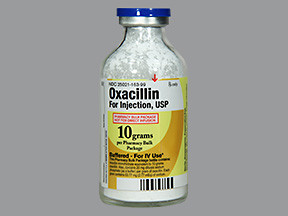
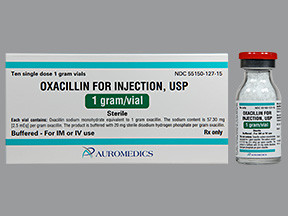
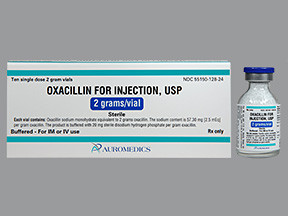
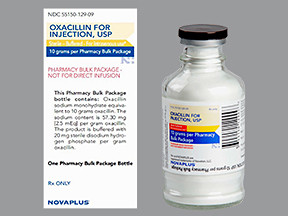
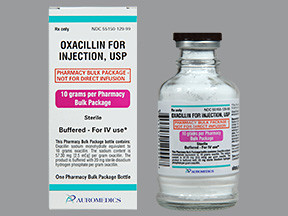
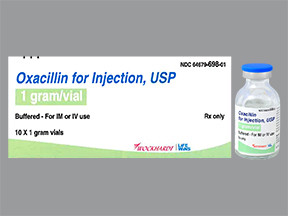
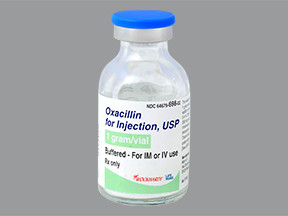
No Reviews Yet